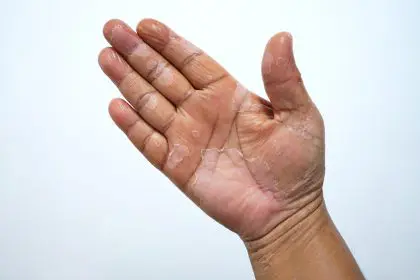Bleeding and cracked skin are not only uncomfortable but also present significant challenges, often arising from diverse factors like harsh weather conditions, frequent handwashing, or underlying skin conditions like eczema. Coping with these concerns effectively demands a comprehensive approach that focuses on nurturing healing while mitigating additional damage. In this quest for relief, a multifaceted strategy proves indispensable. Here, we present seven detailed strategies meticulously crafted to assist in the recuperation process.
From gentle cleansing practices to strategic moisturizing techniques and identifying potential irritants, these methods encompass a spectrum of care. They are designed to alleviate discomfort, foster skin repair, and establish preventive measures against further aggravation. By integrating these targeted strategies into your daily skincare routine, you can foster the healing of bleeding and cracked skin. Embracing these approaches requires patience and consistency, as visible improvements may take time. Yet, through dedicated care and attention, you can cultivate a path towards restoring your skin’s health and resilience.
1. Gentle Cleansing and Careful Drying
Commencing the healing journey involves adopting a gentle cleansing routine. Select a mild, soap-free cleanser suitable for sensitive or damaged skin. Harsh cleansers strip away natural oils, worsening the condition. Use lukewarm water during cleansing, as hot water can deplete skin moisture. After washing, delicately pat the area dry with a soft towel to avoid aggravating the cracks.
2. Moisturize Strategically and Frequently
Moisturizing stands as the cornerstone of healing cracked skin. Opt for moisturizers rich in emollients such as shea butter, glycerin, or hyaluronic acid. Apply generously to the affected area immediately after washing and drying. Keep a travel-sized moisturizer handy for reapplication throughout the day, especially after activities that may further dry out the skin.
3. Utilize Protective Bandages or Dressings
For deeper or severe cracks prone to bleeding, employing bandages or dressings proves immensely beneficial. Before covering the area, apply a thin layer of an antibiotic ointment to prevent infection and expedite healing. Regularly change the dressing to ensure cleanliness and monitor progress.
4. Identify and Avoid Irritants
Take note of potential triggers or irritants exacerbating your skin condition. These could include specific soaps, cleaning agents, fragrances, or fabrics. Minimize exposure to these irritants to prevent further discomfort and support the healing process.
5. Introduce Humidity with a Humidifier
Combat dry indoor air, a factor that can worsen cracked and bleeding skin, by introducing a humidifier into your living or working space. This helps maintain optimal humidity levels, preventing further skin dryness. Ensure regular cleaning of the humidifier to prevent bacterial or mold growth.
6. Hydrate from Within
Internal hydration plays a significant role in skin health. Ensure adequate water intake throughout the day to maintain the body’s hydration levels, supporting overall skin health alongside external moisturizers.
7. Consult a Dermatologist for Personalized Care
Persistent or severe cases of bleeding and cracked skin may necessitate professional intervention. Dermatologists specialize in diagnosing and treating skin conditions. They can offer personalized recommendations, prescribe medicated creams or ointments, or suggest advanced treatments to expedite healing.
As you embark on your journey to heal bleeding and cracked skin, the integration of these comprehensive strategies into your skincare routine marks a pivotal step. Addressing discomfort, fostering healing, and preventing further aggravation are the overarching goals. Keep in mind that patience and consistency serve as stalwart companions on this path, as visible improvements often unfold gradually. Your dedication and care will play a pivotal role in reclaiming your skin’s health and resilience.
Moreover, recognize the uniqueness of your skin; what works best for one may differ for another. The amalgamation of these strategies tailored to your individual needs is key. By prioritizing your skin’s well-being and incorporating these tips into your daily skincare regimen, you take proactive steps toward sustained healing and enhanced skin health.
May these strategies serve as your guiding light, empowering you to nurture your skin back to its optimal state. With perseverance and a commitment to self-care, you pave the way for restored comfort, vitality, and a healthier skin barrier.
This story was created using AI technology.
















